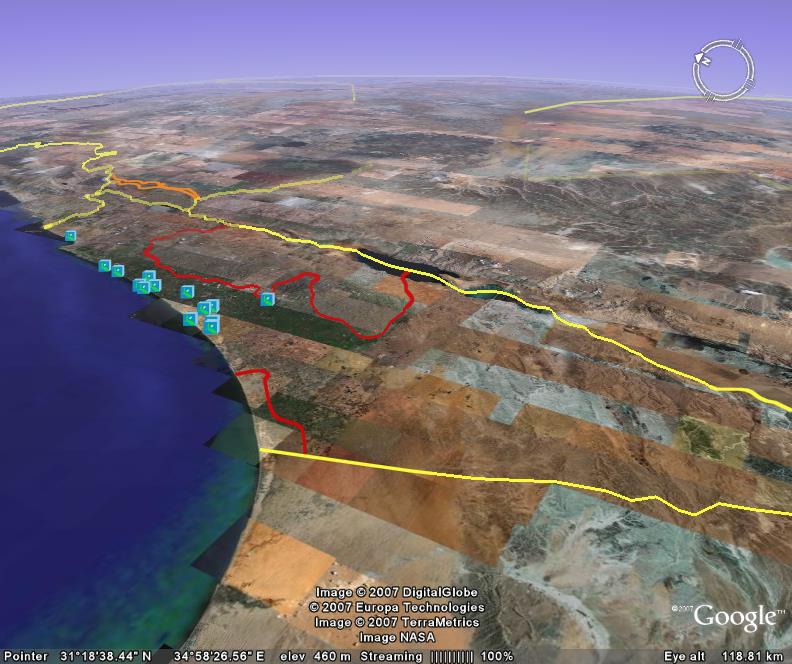Hybrid filberts are the next big thing in biofuels. Move over jatropha!
Dragon’s blood set to dry up
Having been involved in the botanical exploration of the Indian Ocean island of Socotra back in the early 90s, and also — more recently — having done some ecological niche modeling, I was fascinated to see these interests coincide in a recent paper in Biological Conservation. Italian and Yemeni researchers 1 have modeled the distribution of the Socotran endemic Dracaena cinnabari, the Dragonblood Tree, to predict what might happen to it with climate change. It’s not good. This flagship species, whose resin has been the source of a dye and medicine since antiquity, is looking at a halving of its potential area of distribution, due to drier conditions, and only a couple of its current localities will fall within what will remain suitable. Fortunately, they are near a protected area, and the authors recommend that its boundaries be expanded to include them.
Baobab products galore
There’s a Baobab Fruit Company in Senegal. Via Timbuktu Chronicles.
Wild relatives to the rescue (again)
You may remember the recent warnings about a new strain of wheat stem rust called Ug99 making its way from the Rift Valley of Africa across the Red Sea to Yemen, thus threatening the very home of wheat in the Middle East. Jeremy blogged about it a couple of months back. Well, resistance to the disease has now been found in about 70% of the 100-odd samples of a wild wheat (Aegilops sharonensis) collected in southern Lebanon and Israel, according to a paper in Plant Disease. Four of the samples actually have resistance to a whole range of fungal diseases:
Co-author of the paper, Yehoshua Aniksterat, of the Israel-based Institute for Cereal Crops Improvement at Tel Aviv University, told SciDev.Net that although it could be difficult — and take up to five years or more — they may be able to transfer genes from wild to cultivated wheat.
The map below is what GBIF knows about the geographic distribution of A. sharonensis 2.
Underused plants symposium
I’m not sure if we’ve already noted that there is an international symposium on “Underutilized plants for food, nutrition, income and sustainable development” in the offing. Anyway, it is scheduled for 3-7 March 2008 in Arusha, Tanzania, and the deadline for submission of abstracts has just been extended to 31 August.
LATER: Here’s more.
